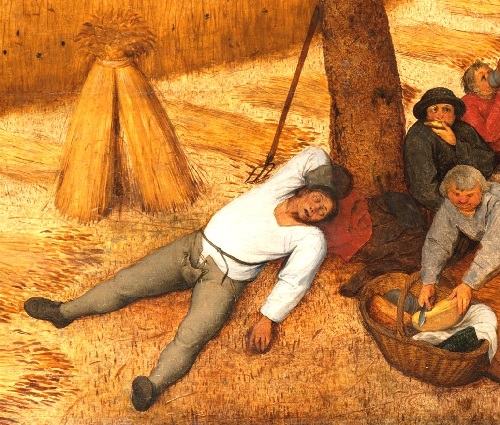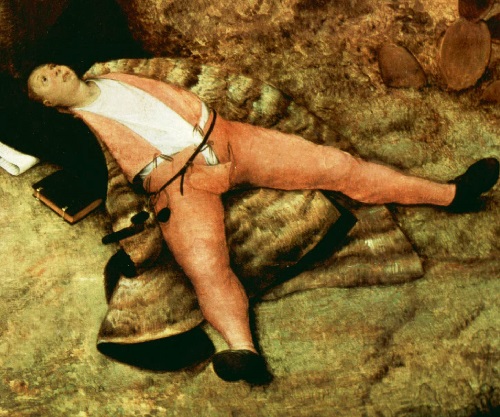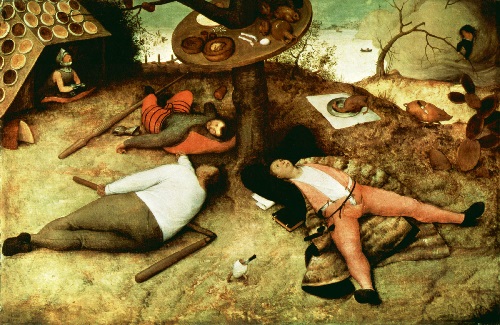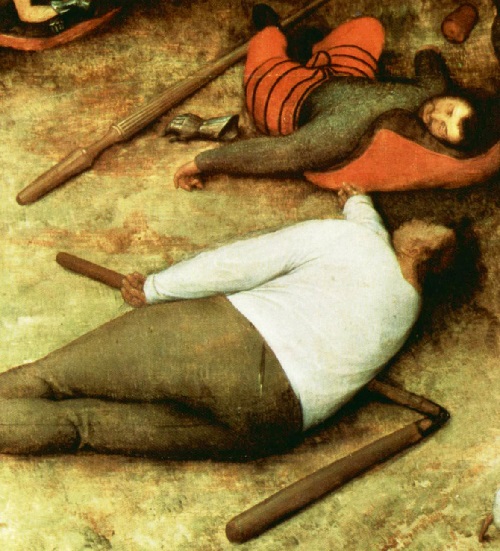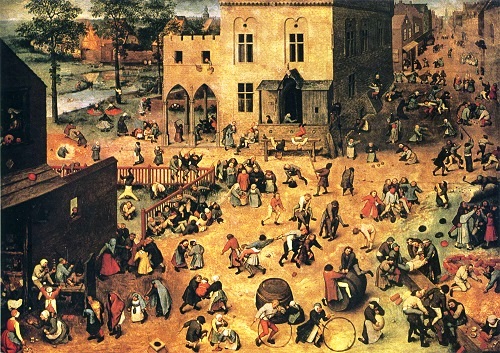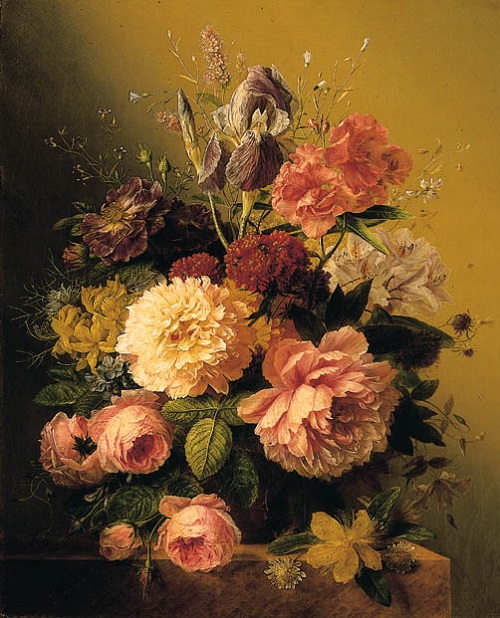The Dutch have created Holland – Bruegel
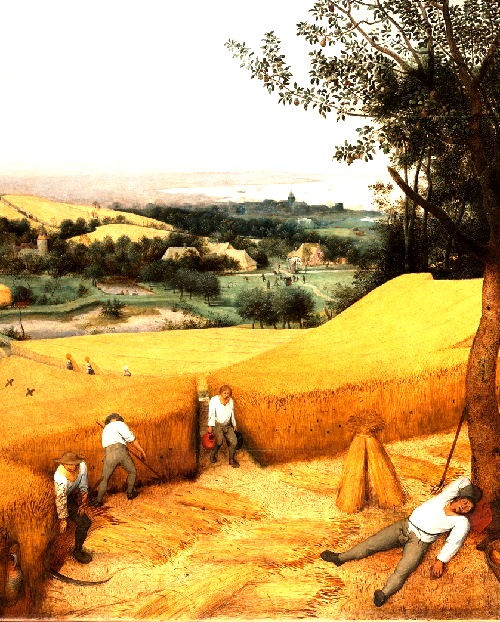
Painting by Pieter Bruegel the Elder ‘The Harvesters’. Oil on wood, 1565. New York City, Metropolitan Museum of Art. The Dutch have created Holland
The Dutch have created Holland
“God created the earth, the Dutch have created Holland” liked to say countrymen of the artist. Wheat fields on the hills burn with hot gold, illuminating the dark green valley and replacing the sun. So fabulous banquet halls covered with piles of treasure and the feasting did not need any other light source. Trees with neat round canopy lined up in neat rows along the roads. Sloping meadows covered with low, like moss, grass, suitable for games. Rectangular ponds explicitly created by human hands, and good wide roads, of course, took a lot of work. Ships glide on a flat surface of the Gulf. The sea – the great stormy element – now seems tame and is no more dangerous than a large mirror.
The picture is densely populated. People are everywhere – harvesting in the fields, playing and walking around in the meadows, catching fish in a pond. People are rude and clumsy. In their busy fussiness, it seems there is nothing poetic. But with their work they have created all that attract us in the picture. They are the creators of this landscape.
Painting “Harvest” belongs to a cycle of paintings by Bruegel, known collectively as “The Four Seasons”. It is believed that it corresponds to late summer (August) or two months (July – August or August – September). The action takes place on a hot summer day. The painting shows a wheat field on a hill. At the edge of the field of the mowed wheat already folded in stacks. The hill offers an idyllic view of the far fields, trees and houses. On the horizon is visible seashore. “Harvest” is one of the few paintings by Bruegel, where tranquility reigns and peace.
Most interesting are depicted in the foreground figures of peasant reapers. Some of them continue to work, while others are eating and resting against a tree. One worker is tired and sleeps, with arms and legs outstretched. His posture resembles a man lying in another famous painting by Bruegel – “The Land of Cockaigne”.
People have always dreamed of a rich and generous land, where everything occurs by itself. There are flowing rivers of milk and honey, and bread grows on trees. In the meadows roast suckling pigs are running around. Nothing should be done in a magical land, the food itself falls into the hands …
Despite the title of the painting, three people depicted in the center, are not very much like slackers. Rather, they resemble weary travelers, relaxing after a long and difficult road. Even in a wonderful country, none of them is in hurry to part with what they did for a living before. The soldier threw a hand gauntlet, but keeps his foot on the spear, so it does not roll away. The farmer put under him the chain, which threshed grain. Next to the clerk – a book and inkwell.
And yet these people entered the country of peace and plenty. It will take quite some time, and they will forget about the hardships and anxieties, former life. Peasants, soldiers and the clerk will soon become lazy, able only to effortlessly receive gifts of magic land.
The Dutch have created Holland
Pieter Bruegel (c. 1525-69), the greatest Flemish artist of the 16th century and the founder of a dynasty of painters that extended into the 18th century. Bruegel was an outstanding draughtsman as well as a painter, and in his early career he earned his living mainly as a designer of engravings. In 1551 he became a master in the Antwerp painters’ guild and soon afterwards made a journey to Italy. He was unmoved by the wonders of ancient and Renaissance art, but the experience of crossing the Alps displayed his skills in depicting landscape and the details of everyday existence.
Bruegel had a considerable reputation in his lifetime and an enormous influence on Flemish painting. Today he is recognized as a profound religious and humanitarian painter. Bruegel had two painter sons who were infants when he died. Pieter Brueghel (the Younger) (the sons kept the ‘h’ in their name) was known as ‘Hell Brueghel’ because scenes of hell and fires were among his favorite subjects. He also reworked many of his father’s peasant subjects. Pieter the Younger’s brother Jan (1568-1625) was known as ‘Velvet Brueghel’ because of his skill at depicting rich and delicate textures. He was rated the finest flower painter of his day and also painted lush landscapes. Jan often collaborated with other artists, notably his friend Rubens. The children and grandchildren of Jan and Pieter continued the family tradition, but with diminishing talent.
Sources:
Norwich John Oxford Illustrated Encyclopedia of the Arts
wiki/Pieter_Bruegel_the_Elder


